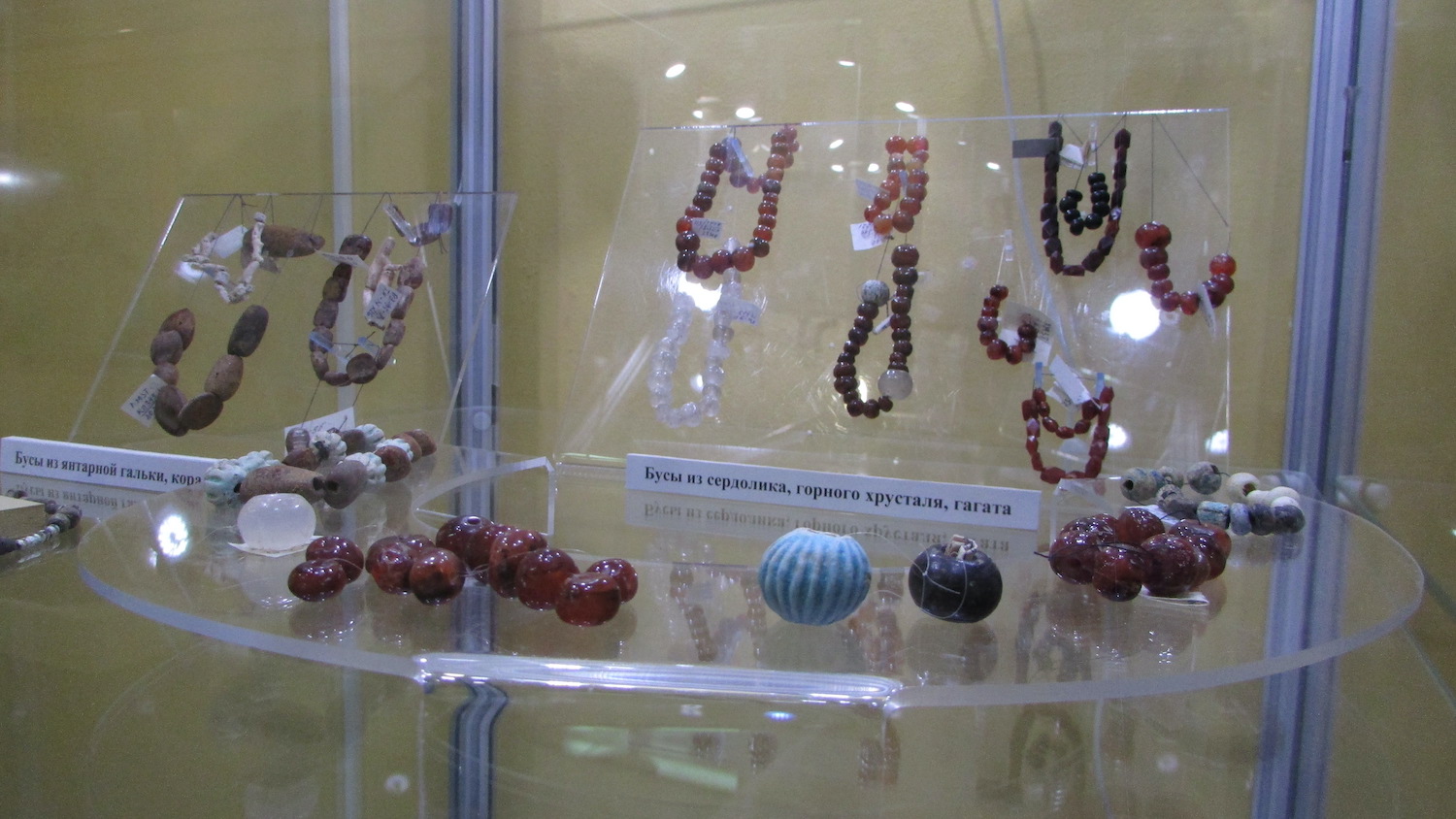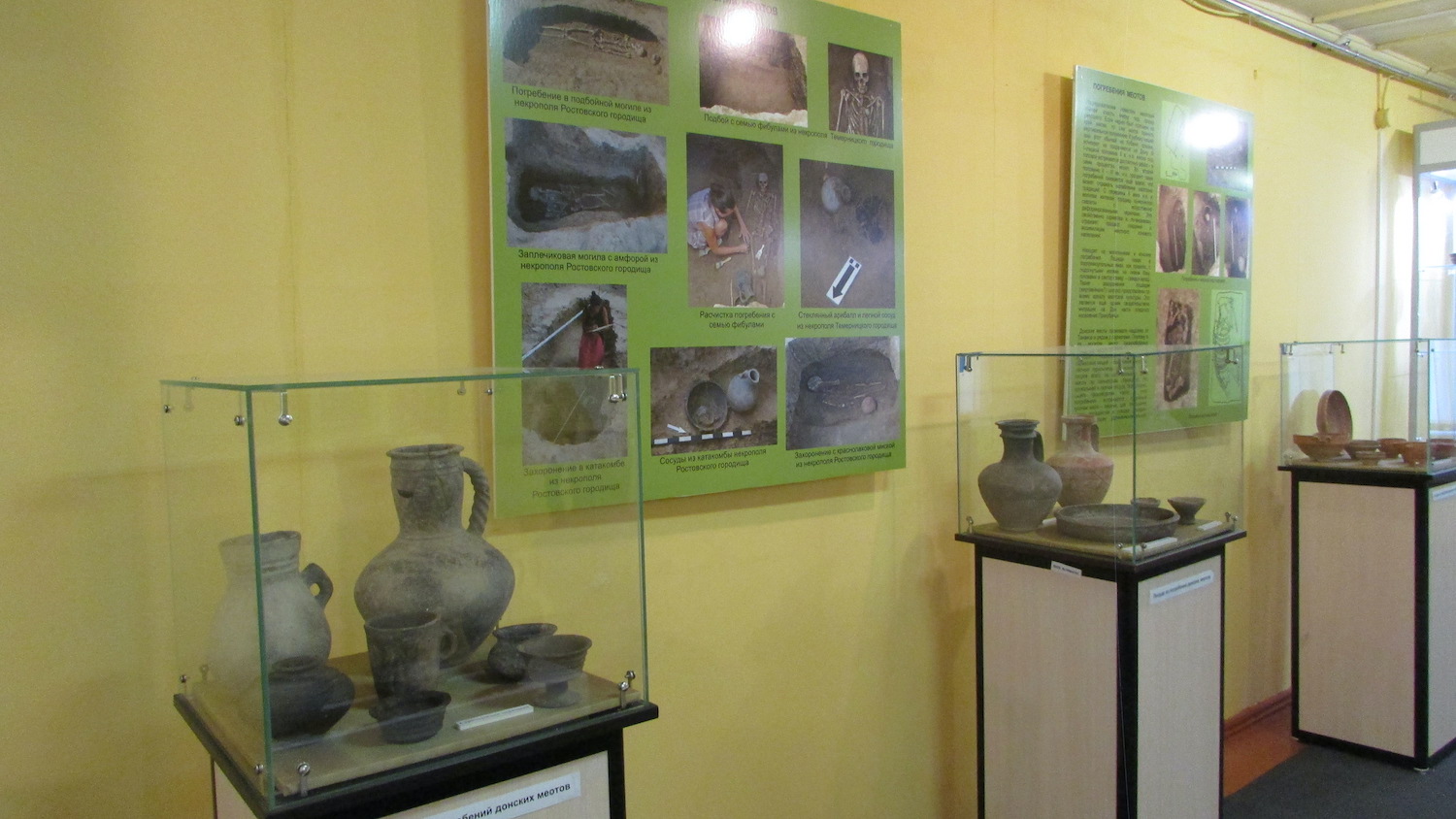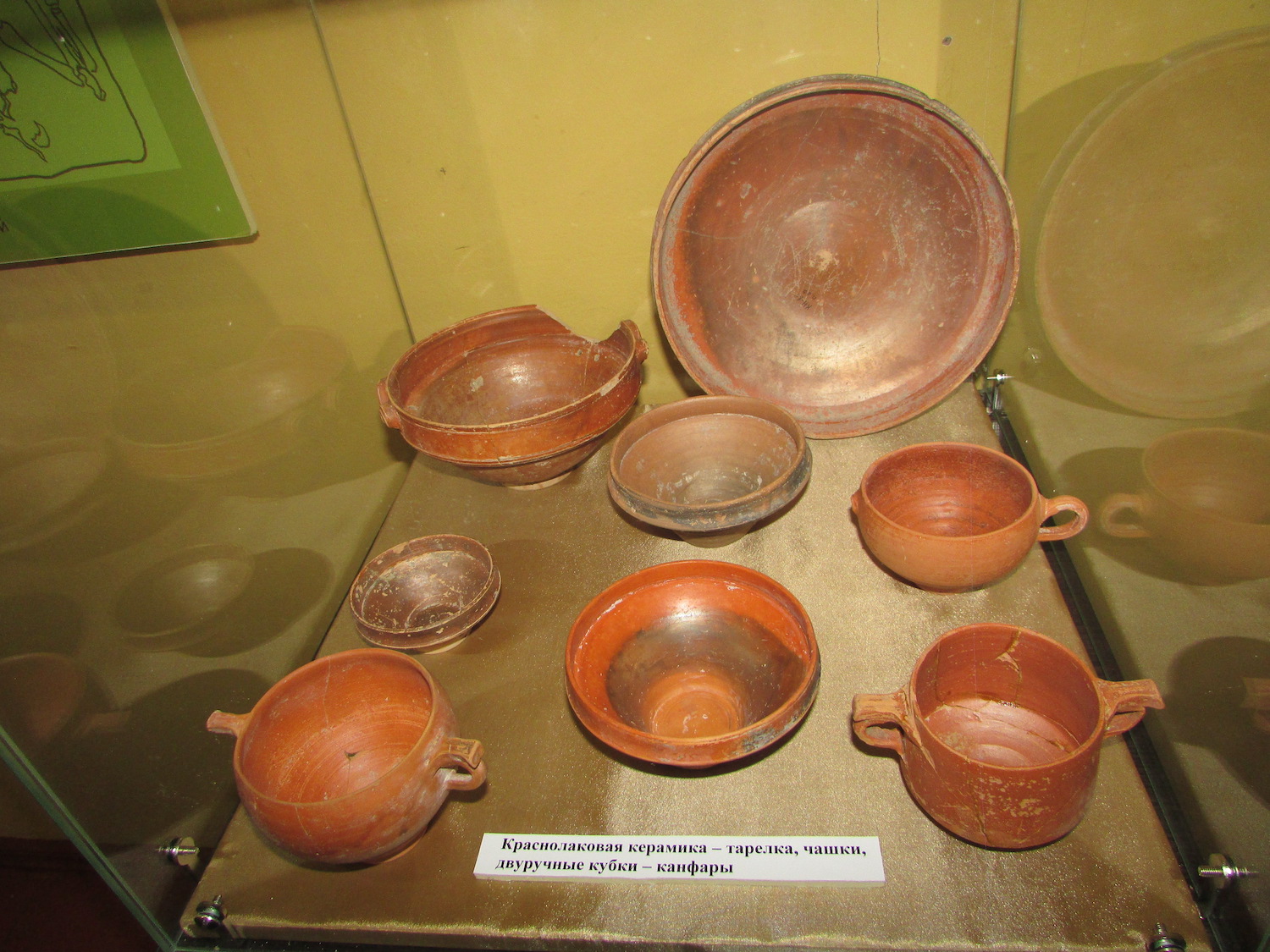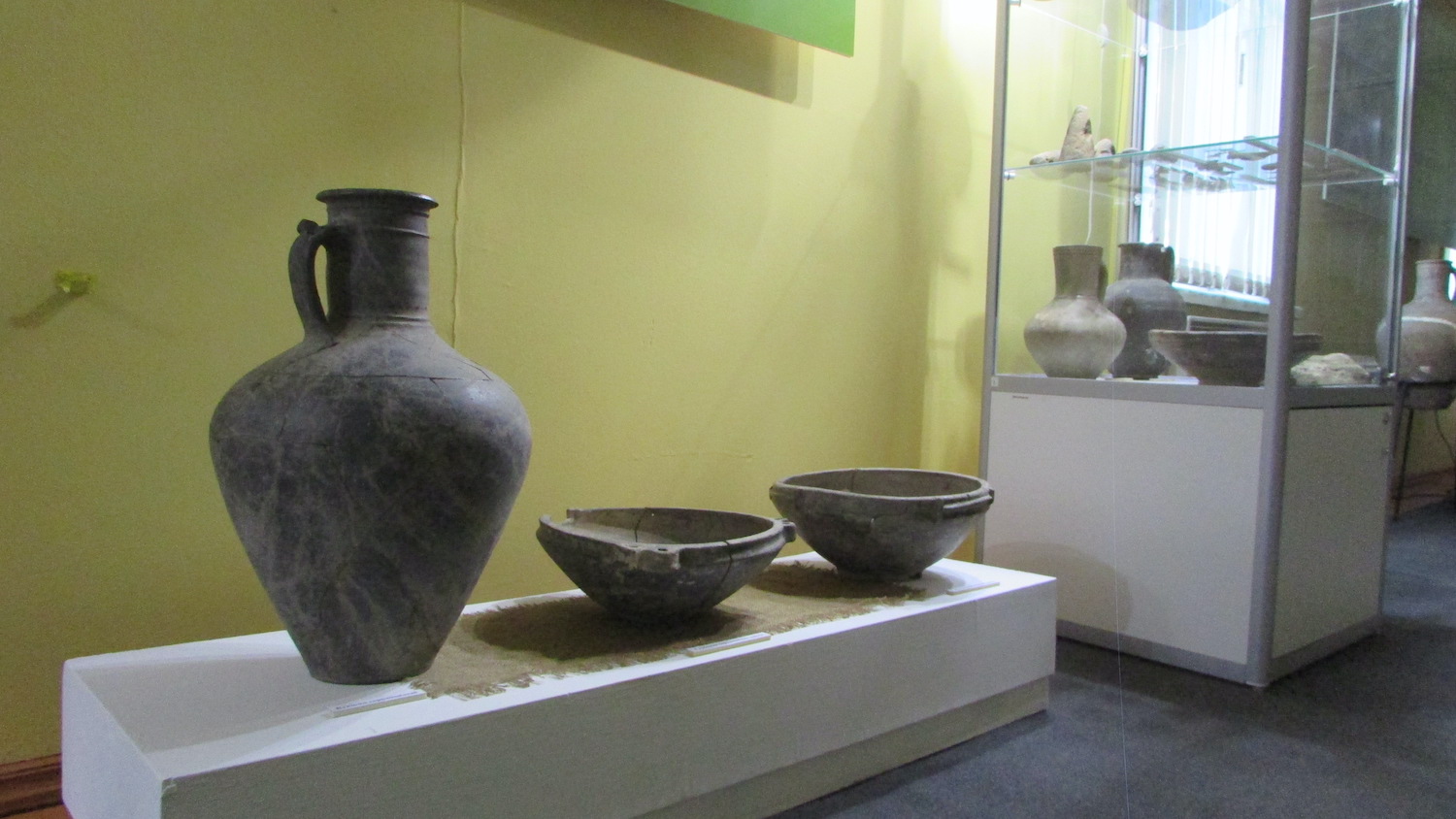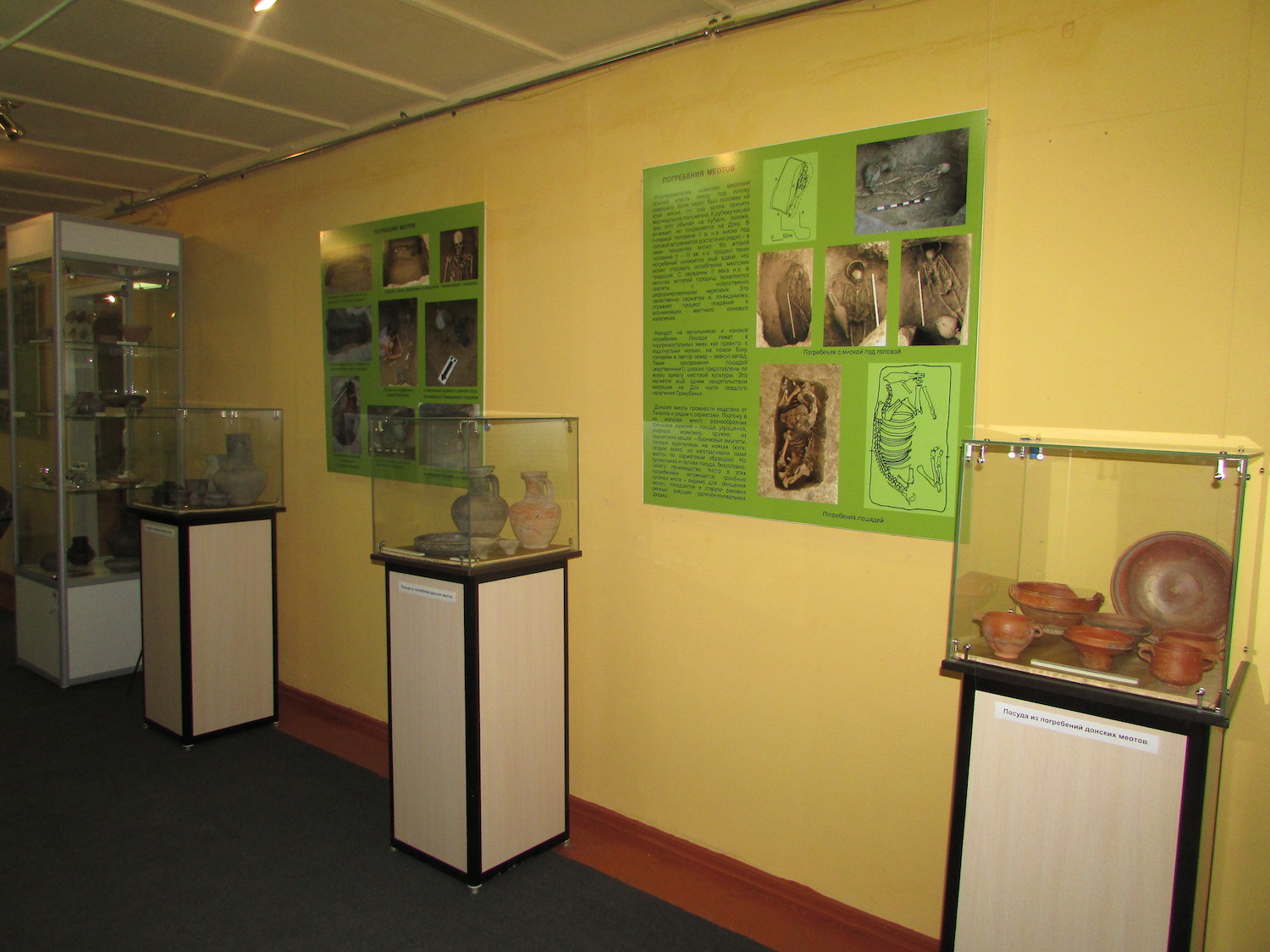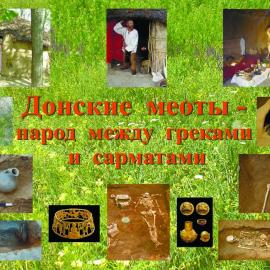
Since September 16, the exhibition "Don Meots - the people between the Greeks and Sarmatians" has been open in the museum–reserve. These farmers, pastoralists and fishermen of the ancient era are often mentioned in their writings by ancient historians and geographers. The exhibition introduces visitors to the finds from the excavations of the Meotian settlements of the I-III centuries AD.
The Meotian settlements were in close economic cooperation with the ancient city of Tanais. It is during the period of their existence that the time of the highest flowering of the latter falls. Grain supplies from the Meotian settlements turned Tanais into the largest grain trading center of the Northern Black Sea region. Settlements were located along the right bank of the Don in a chain – from Tanais to modern Aksai. And on the left bank of the river – on the territory of the present Azov. Most of these settlements turned out to be under the construction of Rostov after a millennium and a half. In the XX-XXI centuries, they are actively studied by archaeologists. The self-names of agricultural settlements are unknown, and in the scientific world they are named according to geographical landmarks of our time.
The exhibition tells about the life, occupations and customs of the Meots based on the materials of the stock collections of the museum-reserve. Here are artifacts from the excavations of two settlements of the Tanais district, excavated within the Don capital – Rostov-on-Don: Nizhne-Gnilovsky and Kobyakovsky settlements. But the information about the peaceful neighbors of the local Greeks and Sarmatians is not limited to this information: there is also the latest data.
Today, the Meotian theme is especially relevant for archaeological science and, in general, for lovers of antiquities of the Don region and the North-Eastern Azov region. And that's why: since the summer of this year, the reconstruction of Stanislavsky Street, one of the oldest in the historical center of the city, has begun. In recent years, road construction work has always been preceded by research by archaeologists. Tram rails were removed, and now large areas on Stanislavsky and the 5th Don Corps square are occupied by excavations of necropolises of Rostov and Temernitsky settlements. The leaders of the expedition and leading archaeologists provided us with pictures of episodes of their work and recent discoveries. Together with items from the funds of the Tanais Museum-Reserve, they can be seen at the new exhibition "Don Meots – the people between the Greeks and Sarmatians".
Time:
September 2017 - September 2019
